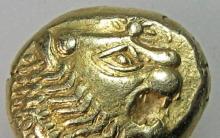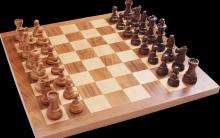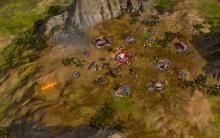It’s very easy to make educational games for children with your own hands; you just need to use a little imagination. Games for kids are very important, because in the process of playing they learn and get to know the world around them. Here is a game about animals “Who Lives Where”.
This is a great option for introducing your baby to the outside world. This interesting lotto for children develops memory, logical thinking, attention and speech well.
Cards with various animals your baby will like it. This set contains 4 playing fields on the following themes:
1) Who lives on the farm? Cards with pets.
2) Who lives in the forest? Cards with wild animals.
3) Who lives in water? Cards with sea creatures.
4) Who lives in Africa? Cards with savannah animals.
This game is suitable for home activities and for kindergartens, development centers, and elementary schools. You can work with one child or with a group of children.
How to make animal lotto yourself
Print the files, stick them on cardboard, cover the sheets with cards with tape, cut them out and you can start studying!

Educational lotto game for studying animals for children from 2,3,4,5,6 years old

Educational lotto game for studying animals for children from 2,3,4,5,6 years old

Educational lotto game for studying animals for children from 2,3,4,5,6 years old

Educational lotto game for studying animals for children from 2,3,4,5,6 years old

Educational lotto game for studying animals for children from 2,3,4,5,6 years old

Educational lotto game for studying animals for children from 2,3,4,5,6 years old

Educational lotto game for studying animals for children from 2,3,4,5,6 years old
How to learn the names of animals with your child
1) To begin with, an adult can simply tell the child about the habitats of animals, arrange the pictures correctly and name all the animals.
2) Then select any field and cards only related to it, invite the child to arrange them independently and name them.
My son liked this game, he couldn’t even wait quietly for me to make it, he immediately joined the process. Look at the photo for yourself.
Good luck to you and your children in studying animals!

Educational game about animals - Who lives where?
And to make the game more interesting, you can watch educational cartoons about animals from the educational channel ALL THE BEST FOR CHILDREN!!!
Who lives in the forest
Who lives in the sea
Who lives in the desert
What should a preschooler know about animals? Firstly, is it a wild or domestic animal, an animal of the forest, the north or Africa, that is, its habitat. Secondly, what kind of “house” does the animal live in if it is wild: it could be a hole, a den, a hollow, or the animal does not make a home for itself at all. Thirdly, what does this animal eat? A captivating story is what you need. And be sure to accompany this story about animals with pictures, because we know that visual memory is very helpful in a preschooler’s learning. Let's talk with the child about wild animals and show cards - mnemonic tables, so the kids will be better interested in the topic and remember all the details visually and figuratively.
Wild animals of the forest
Hare
The hare lives in the forest. He does not dig holes for himself, but hides in bushes, in recesses under roots, under branches, where he builds a winter hut for himself. The hare's main food is grass, hay, and young tree branches. The hare also eats vegetables, fruits and berries, if he can find them.
Fox
The fox is a wild animal. She lives in the forest, in a hole. The fox is a predatory animal. The main food of foxes is insects (beetles, earthworms) and small rodents (voles). If the fox manages to catch a hare or a bird, which does not happen very often, she will happily eat them too. Often foxes settle next to humans and steal poultry from poultry houses. Sometimes she can also feast on fish washed up on the shore. She will not disdain berries and fruits when she is hungry.

Wolf
The wolf is an animal of the forest. Wolves live in a den. Wolves hunt in packs, so they are able to catch large prey: elk, deer. The wolf will gladly treat himself to both the bird and the bunny. In hungry years, wolves can attack livestock, but this happens very rarely. Wolves are very cautious and afraid of humans.

Hedgehog
Hedgehogs live in the forest. They rarely dig holes themselves, more often they occupy someone else’s or build a nest among protruding roots, under a bush, in depressions in the ground, dragging there a lot of leaves, dry grass and moss. In winter, hedgehogs hibernate. Hedgehogs eat mainly insects. If they come across a snake, they might eat it too. Don't mind eating mushrooms, acorns, berries and fruits.

Brown bear
Brown bear is a wild animal of the forest. For the winter, the bear builds a den for itself and hibernates. The main food of bears is berries, roots, and mushrooms. If a bear finds a bird's nest, he will feast on eggs; if he finds a hive of wild bees, he will eat honey. The bear knows how to catch fish and eats it with pleasure. He can even eat a mouse if he manages to catch it. He will not disdain carrion either.

Squirrel
A squirrel lives in the forest. She finds a hollow in a tree and settles there. The squirrel eats berries, fruits, mushrooms, nuts, acorns and grains. Stores supplies for the winter, hiding them under roots or among tree branches so as not to starve in winter.

Desert Animals
Camel
Camels live in desert and semi-desert. They don't build housing. They feed on grass (both dry and fresh), tree branches, camel thorn, ephedra, wormwood, and chew saxaul branches. A camel accumulates nutrients in its humps, so it can go without food for a long time.

fennec
Fenech lives in deserts and semi-deserts. He digs himself a hole in the sand. Fennec fox is omnivorous. It feeds on insects, lizards, bird eggs, small rodents, and plant roots that can be dug up in the desert.

When the child has become acquainted with animals, their way of life, and nutrition, let him try to tell himself about what he remembers. Pictures and diagrams with an algorithm for composing a descriptive story will help with this >>
At first, you may not be able to get a coherent story, then try printing and cutting the cards above into sectors, and ask your child to arrange the pictures correctly.
More detailed stories for children about animals can be found on our website in the sections:
An educational game for preschool children, with the help of which kids will be able to repeat the names of animals and their cubs, as well as develop attention, memory and speech.
Before starting the game, cut the cards along the dotted lines, you will get 72 cards (9x10 cm). Give the children an equal share of cards with images of adult animals. Then show cards with pictures of cubs one by one. Pay attention to whether the child correctly names the cubs in singular and plural.
- Find who needs what. Why?
- Choose a vest for each boy so that they have a suit.
- Help the hedgehog mother find her baby.
- Show the houses where the puppy, parrot and fish live.
- Match pairs of different items. Why do they fit together?
- Which of the animals lives in which house? Walk the paths with them.
Educational game. Designed for children 3-6 years old. Contents: 20 cards consisting of 2 elements. Some halves depict various animals, others show their habitats. The game will help children learn the characteristics of the lives of some animals, teach them to distinguish their images, and strengthen visual memory and attention. Game options: “Third (fourth) extra”, “Common place”, “Let's play ourselves”, which are described in the instructions for the game.
Rules of the game: see continuation...
Progress of the game:
This house is your mouth. The first floor is the lower teeth. The second floor is the upper teeth. There is one large apartment on the ground floor.
In it live sounds that can whistle (S-S-S-Z-Z-Z). Ask your child how many apartments are on the second floor?
In the first apartment live two brothers with a strong and soft character (L-L). In the second apartment there are also two brothers with a strong and soft character (R-R). In the third, large apartment there lives a family of hissing ones.
They were named that way because they love to hiss.
Ask your child to insert letters and pictures with the corresponding sound into the pocket windows.
The kit includes:
- cards with letters and pictures,
in which one or another letter from the game is present.
- there is a blank card template into which you can insert the letters and pictures you need for the game.
The pocket windows are glued in place on the house, spreading a thin strip of glue around the very edge on the back side in a circle.
Format: A2 (42x60 cm)
Compiled by: limush
Look at the windows with your baby, notice that there are large windows, there are small ones, that someone is looking out of each window.
Before each new task, ask your child to lay out the windows in front of him.
Read the task and invite your child to arrange the windows on the house. Don’t forget - at the end of the task, the child must name the residents of the house.
The file contains 5 A4 sheets with various houses without windows
and 16 windows: - 8 large and 8 small.
Instructions for playing the game in the file.
author limush
Goals:
Develop the ability to recognize a bird or animal by its characteristic actions.
Improve skills in working with action symbols.
Develop visual attention, memory, activate thinking.
Description of the game. Children look at the house and determine what kind of house it is (one-story or multi-story, wooden or stone). The teacher invites the kids to guess who lives in this beautiful house. Children look at the action symbols depicted on the shutters and guess the “tenant” from them. For example: flies, builds (nest), pecks, sings. - It's a bird. The child checks the correctness of the answer by opening the shutters behind which the “tenant” is hiding. Cut the shutters on three sides, and then glue the template with the “tenants” on the back side, having previously aligned them in the window. It is advisable to laminate the template with the house with wide tape and then make cuts to avoid the shutter being torn off due to frequent opening)))).
A4 format
author limush
Educational game Domestic, wild animals and birds
The game develops a child’s thinking, perception, attention, and introduces him to different groups
animals, their habitats and way of life. During the game, fine motor skills of the hands are improved.
Purpose of the game: To acquaint the child with the names and characteristics of animals, their habitats.
How to play: Lay out the cards face up. Separately put 5 cards with plot drawings.
Ask your child to find a picture of some animal, ask where he lives,
Which of the 5 story cards can it be attached to? Invite your child to collect all the chains from the cards.
The file contains 5 A4 sheets, cut out the puzzles and preferably laminate them with wide tape.










Board game "Millionaire Elite"
Personal account SnowQueen (Snow Queen) Snow Queen activate discount card
Fortune telling with playing cards
Vampires and werewolves Werewolves in the elder scrolls online
How to find and deliver the Dragonstone in the quest “Windy Peak” in the game Skyrim